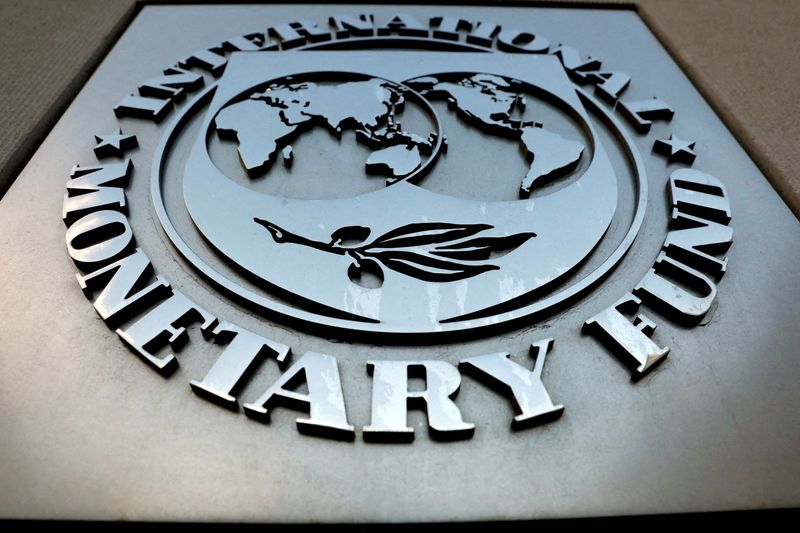LONDON (Reuters) -High interest rates, growing investor risk aversion and borrowing that ballooned in recent years have left a range of developing economies mired in debt crises. Helping them claw out of this will be a key agenda item at the annual IMF and World Bank meetings in Morocco's tourist hub of Marrakech which kicks off next week.
Below is a look at countries facing debt troubles, listed in alphabetical order.
EGYPT
North Africa's largest economy needs to repay some $100 billion of hard-currency debt over the next five years. Cairo currently spends over 40% of revenues on interest payments; financing needs for fiscal 2023/204 stand at $24 billion.
Egypt has a $3 billion IMF programme and has devalued the pound by roughly 50% since February 2022. But a $2 billion privatisation plan has been slow, and it has delayed the removal of electricity subsidies.
Elections, scheduled for December, lower the chances of painful reforms, analysts said, and support from wealthy Gulf nations is key to ensuring financing needs are met.
ETHIOPIA
The COVID-19 pandemic hammered Ethiopia's economy, and a two-year civil war from November 2020 heightened the pain with the country losing duty-free access to the U.S. amid rights abuse allegations.
Ethiopia requested a restructuring in early 2021 under the G20 Common Framework - set up during the pandemic to try to streamline debt overhauls.
In August, China allowed partial debt payment suspension. Last month ratings agency Moody's (NYSE:MCO) changed Ethiopia's outlook to stable from negative on expectations of quick progress through the Common Framework.
GHANA
Ghana defaulted on most external debt in late 2022 amidst its worst economic crisis in a generation, becoming the fourth country to seek a rework under the Common Framework.
Its progress in restructuring both domestic debt and $30 billion in external debt has been fairly swift and it secured a $3 billion IMF bailout in May.
Ghana's finance minister has said he expects to reach a deal with international bondholders by year-end. Still, protesters have taken to the streets of Accra recently over rising living costs, unemployment and economic hardship.
KENYA
The East African nation's public debt stood at 67.4% of GDP at the end of 2022, according to the World Bank, putting it at high risk of debt distress.
President William Ruto's government has moderated spending and proposed a raft of tax hikes, assuaging some concerns over imminent default. But surging oil prices have boosted inflation, and the currency has lost more than 16% against the dollar this year, casting doubt on his ability to press on with reforms.
Kenya, which has to repay a $2 billion eurobond next year, is in talks with both the African Development Bank and the World Bank for budgetary support.
LEBANON
Lebanon has been in default since 2020 with few signs it will resolve its economic meltdown anytime some.
The IMF last month welcomed central bank changes, including phasing out a controversial exchange platform and curbing monetary financing of the government. But it said deeper reforms were needed amid the country's "difficult and unstable" outlook.
The IMF has warned that if the status quo continues, public debt could reach 547% of GDP by 2027.
PAKISTAN
Pakistan needs upwards of $22 billion to service external debt and pay bills for fiscal year 2024. A caretaker administration is in charge with elections scheduled for January. Inflation and interest rates are at historic highs, and it is struggling to rebuild from devastating 2022 floods.
In June, it reached an 11th-hour deal for a $3 billion IMF bridge loan. Saudi Arabia and the UAE followed with a total of $3 billion cash infusions.
Reserves by end-September were enough to make it to elections but there are questions how long it will be able to avoid default without huge support, observers say.
SRI LANKA
Sri Lanka defaulted on international debt in May 2022 after the pandemic drained its tourism-dependent economy of crucial cash to pay for imported food, fuel and medicine.
The crisis-hit island nation announced a debt overhaul plan at the end of June and has continued to make progress.
But the parties continue to spar over how much of a hit domestic banks and investors in state-owned enterprises (SOEs) should take. The next tranche of a $2.9 billion IMF bailout package could be delayed over a potential government revenue shortfall.
TUNISIA
Multiple shocks since a 2011 revolution have pressed the North African nation into a full-blown economic crisis.
Most debt is internal, but a $500 million eurobond matures this month, and credit ratings agencies have said Tunisia could default.
President Kais Saied has slammed the terms required to unlock a $1.9 billion IMF loan as "diktats" and rejected 127 million from the European Union as too small.
The tourist season narrowed the current account deficit and Saudi Arabia pledged $500 million in support. But citizens continue to grapple with food and medicine shortages.
UKRAINE
Ukraine froze debt payments after Russia's invasion in 2022, and said it is likely to decide early next year whether to try to extend that agreement or begin looking at alternatives.
Top institutions estimate the post-war rebuild cost will be at least 1 trillion euros, and the IMF estimates Ukraine needs $3-$4 billion a month to keep the country running.
Recently, the economy has shown signs of recovery, with inflation slowing and business sentiment improving. But political shifts elsewhere - including the United States - have cast doubt on the durability of international support.
ZAMBIA
The first African country to default during the COVID-19 pandemic, Zambia's years of restructuring delays made it a symbol of the problems with the Common Framework.

A repair plan finally appeared imminent after Zambia clinched a $6.3 billion debt rework deal with the Paris Club creditor nations and China, its other big bilateral lender, in June. Zambia expects to finalise a debt memorandum by year-end.
($1 = 323.5000 Sri Lankan rupees)